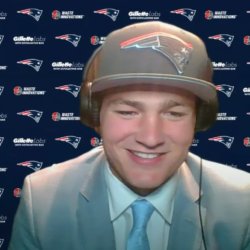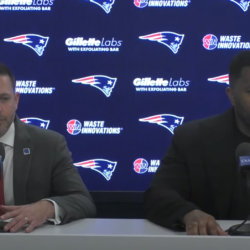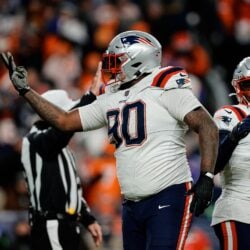A Closer Look: How Important Are Sacks?
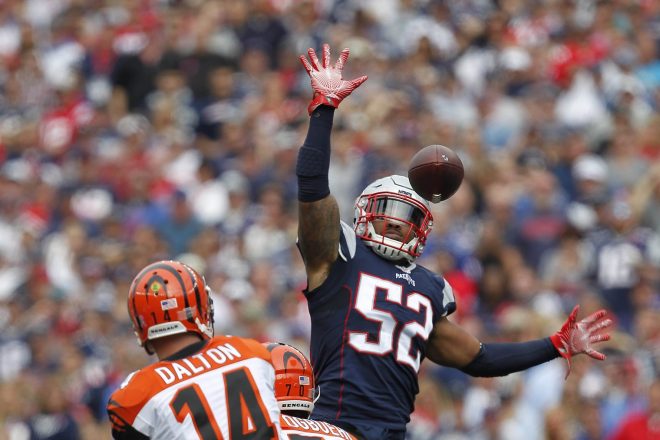 (PHOTO: Stew Milne - USA TODAY Sports)
(PHOTO: Stew Milne - USA TODAY Sports) 🕑 Read Time: 5 minutes
New England Patriots > Patriots Blog
 (PHOTO: Stew Milne - USA TODAY Sports)
(PHOTO: Stew Milne - USA TODAY Sports) Rushing the passer has been an integral part of the game ever since the invention of the forward pass. For years the game was run-dominated. In 1970, the average NFL team had 26.9 pass attempts a game, and was sacked 2.4 times a game. In 1990, teams were throwing 30.2 times a game, and were being sacked 2.4 times a game. In 2000, those numbers were 32.9 passes a game and 2.5 sacks. Then the rules changed to favor passing, and in 2015, teams threw an average of 35.7 times a game, but interestingly enough, were sacked just 2.3 times a game.
Quarterbacks drop back to throw, and defenses try to tackle them before they are able to throw. Sacks. They affect field position. They affect down and distance. They affect momentum. But just how important are they in the grand scheme of things? They certainly are “sexy”, but are they as important as some fans seem to think they are? Well, to be fair, GMs also think they’re important, as players with high sack totals tend to get very large contracts. The market seems to have spoken. But perhaps GMs are overvaluing them. Let’s see.
So far in 2016, the average pass attempt in the NFL yields 7.2 yards. That means that when the coach calls for a pass play, in general, on average, they can expect to gain 7.2 yards on that play, assuming they actually are able to get the pass off before being sacked or forced to scramble.
The average sack in the NFL costs the offense 6.2 yards of field position. On the face of it, then, the average sack is a net of -6.2 yards for the offense, but that’s just one way of looking at it. If we combine the expected gain with the actual loss, a sack really costs a team 13.4 yards of field position.
Contrast this with a tackle for loss in the run game. In 2016, the average rushing attempt in the NFL goes for 4.2 yards. Of the 5537 rushing attempts in the league so far this year, 102 of them have been “stuffs”, or tackles for loss (TFL). Those have totaled 203 yards, for an average of 2.0 yards lost per TFL. So whenever there is a rushing attempt that is stuffed, the offense loses 2 yards. That’s a significant difference from the 6.2 that are lost from a sack. Moreover, on running plays, it means that a TFL costs a team 6.2 yards of field position.
It is obvious that running is a more conservative play than passing. You gain less yardage, but you risk less as well.
So back to sacks. In football analytic terminology, there exists this idea of “expected points”. That is, charting thousands of football games over the years, analysts assign an expected point value to every down and distance situation from every spot on the field. First and 10 from your opponent’s 45 yields a different expected point number than third and 13 from your own 27. For each down and distance, the expected point value, when graphed, resembles a pretty straight line, meaning that there is a linear relationship between these values. So to make it simple, we will just look at a team possessing the ball at the 50 yard line.
If you have the ball first and 10 from the 50, your expected points number is 2.0. But if you get sacked (for the average 6.2 yard loss, rounded simply to 6), suddenly you have second and 16 from your own 44. And in second and 16 from your own 44, your expected points number drops to 1.1. In other words, that sack costs your team 0.9 expected points.
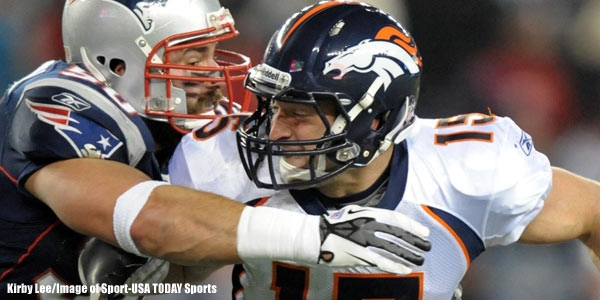 “Putting pressure on the quarterback without getting a sack is very important. Such pressure can often times be more effective at creating a turnover, because the QB sometimes forces bad throws into coverage because they don’t want to take the sack.” |
If you have the ball second and 10 from the 50, your expected points number is 1.5. If you get sacked and now face third and 16 from your 44, your expected points number drops to 0.4. A drop of 1.1.
So on the whole, a sack essentially costs your team, on average, 1.0 expected points.
But in reality, it’s worse than that, because you were expecting to have a positive gain of 7.2 (rounded to 7) yards. Those two 0.2 numbers actually add up to almost a half yard, which makes a difference in expected points, but to keep this simple we’ll just go with 6 and 7. If you were expecting to gain 7 yards, but instead lose 6 yards, that’s a net loss of 13 yards.
So let’s see what this looks like:
Situation: Expected Points
1-10 from the 50: 2 points
2-3 from the opponent’s 43: 2.6 points
2-16 from your 44: 1.1 points
That’s a net loss of 1.5 expected points (2.6 – 1.1 = 1.5).
Situation: Expected Points
2-10 from the 50: 1.5 points
3-3 from the opponent’s 43: 1.8 points
3-16 from your 44: 0.4 points
That’s a net loss of 1.4 expected points (1.8 – 0.4 = 1.4).
In other words, if you have the ball at the 50 yard line, first and 10, and you call a pass play, you are expecting that after that play is executed, you improve your expected points by 0.6, but instead, because of the sack, you drop your expected points by 0.9, meaning it’s a net loss of 1.5 expected points. That’s a LOT of lost expected points based on the outcome of one play. It’s a similar expected points lost from a second down sack as well, and for a third down sack it’s even worse, because now you’re facing fourth down.
The only kind of play that reduces your expected points value more if you have the ball is a turnover. If you fumble at the 50 yard line, your expected points goes from +2 to -2, because now the other team has a +2 expected points value. So turnovers are enormous, but the next largest game-changing play is a sack.
Speaking of turnovers, that’s another way of looking at things. A QB fumbles the ball roughly 1 out of every 10 times (10.4%) he’s hit with possession of the ball. This includes both runs and sacks. So the number is normally even higher when it comes to sacks, because he’s not protecting the ball like a runner. But let’s just go with that number. A back or receiver carrying the ball normally fumbles 1.8% of the time, or twice every hundred touches (or once every 50 touches). So a QB getting sacked is much more likely to fumble the ball than if he managed to complete a pass to a back or a receiver – nearly six times as likely, in fact.
Since turnovers are the largest game-changing play, an offense getting sacked not only loses field position, it loses down and distance, it loses point expectancy, and it opens itself up to a much greater chance of the ultimate game-changing play: a turnover.
Putting pressure on the quarterback without getting a sack is very important. Such pressure can often times be more effective at creating a turnover, because the QB sometimes forces bad throws into coverage because they don’t want to take the sack. Consistent pressure is more important than the occasional sack. But on the whole, a sack is more valuable than QB pressure.
In sum, a sack has a dramatic impact on a game, which is why NFL GMs pay good pass rushers a lot of money. And it’s also why NFL GMs pay good pass protectors a lot of money. Moreover, it’s why many NFL teams now favor quick, short passing attacks, where the quarterback gets rid of the ball so quickly – more quickly than the pass rush can arrive and disrupt things.
Sacking the quarterback, because it doesn’t happen very often in a game (about four and a half times on average), isn’t the most important thing a defense can do. But aside from a turnover, a sack is the most game-changing thing that a defense can do. Sacks, therefore, have an enormous impact on a game, and that’s a huge reason why teams value players who can get to the quarterback so much, and, conversely, why teams value players who can keep defenders from getting to their quarterback.
